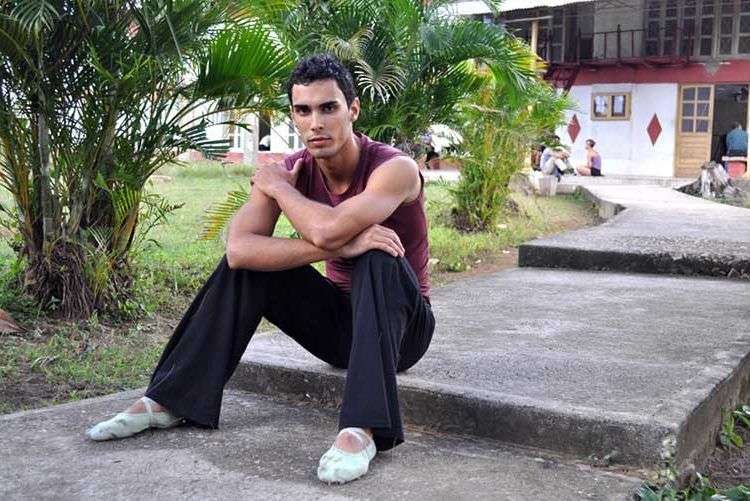The young Cuban choreographer José Enrique Santos considers indispensable the collaboration of a theatrical adviser for the plays to say something to the public. The dancer of Camagüey Ballet has just won the second prize of the 9th Meeting of Young Choreographers in the country by his work Beatas, but before talking about himself, he ponders the joy of having met the playwright Luis Orlando Antúnez, director of La andariega theater group in this city located east of the archipelago.
“A theatrical advisor is important for a choreographer, and in this event I have seen very good proposals, but they are mainly focused on a search or exploration of movement, are merely based on that and say anything, and in a dance there is always something to say, something to tell,” the artist trained in the classical ballet academy said.
Beatas is a profound play inspired by the homonymous picture of Camagüey’s painter Fidelio Ponce de León (1895-1949), an oil painting full of mysticism which earned the author a prize at the National Exhibition of Painting and Sculpture in 1935. The work recreated in dance delves into the perennial struggle of four women with their alter ego, in the remotest corners of the heart and appeal to costumes or self-control mechanisms like religion to conceal the true desire. The dance creation multiplies the questions of the canvas seconded by appropriate lighting and costumes for a drama of spiritual seclusion.
According to Santos, the idea of working from Ponce´s painting was by Luis Orlando, whom few know by his name, each being close to him call him by the nickname Bambino. They both worked in the work and by the professional contribution of that link the dancer recommends choreographers, and especially the young ones, getting closer to a theatrical consultant.
Along with Bambino he also worked on the staging of Melancholy, another play presented in the choreography competition, within the scenario of Las Carolinas, headquarters of Retazos Dance Company, located in the historic center of Havana. During the implementation process, Bambino spent days immersed in exploring the feelings of impossibility and helplessness. At the same time, he could not literally convey his condition to the actors, a couple of children, because according to the teacher he must always transmit them hope instead of any ailment. So he did and the end of the play is not depressing, although it is hard avoiding tears.
Melancholy , composed on the homonymous track by Silvio Rodriguez, founder of the New Cuban Trova, addresses an old social taboo, the typecasting of genders since childhood and the trauma generated by this pressure. Girls should play with dolls and boys with cars, what is the contribution of that socially established norm?
The play won the biggest cheers of the contest and despite not receiving awards -to surprise of the auditorium , or official mentions, the jury granted a special laurel to the boy Rolando Couper by his acting versatility.
“I have been working with children for three years and I feel great because they are a sponge, they capture in a minute everything what a person does, and I consider very important to work with them to help them grow ,” Jose Enrique noted.
This restless young man is still trying to define his own style but he has very clear that he will never perish from ballet.
“I like classical, but I feel more freedom when expressing myself with a contemporary choreography. However, I will never give up to what I do . I do not think quitting the ballet shoes or stop mixing classic with modern dance forms, “he said.
Regina Balaguer, Camagüey Ballet director, trusted in Santos to expand the repertoire of the company, while developing a good career as a dancer. In the institution’s recent seasons, the artist took the leading roles in many of the works, now he yearns for a staging of Giselle that allows him to fulfill the dream of playing the Duke Albrecht.
Indeed, with Giselle he has two dreams: one is to dance it and another is to build a conceptual choreography on which he believes that are the four most important interpreters of classical ballet: Giselle, Odette, Carmen and Juliet, seen from a contemporary angle.
That next work will also include the collaboration of Bambino and the support of the Camagüey Ballet, always open to the choreographic innovation, as well as the whole conspiracy beneficial for art.










